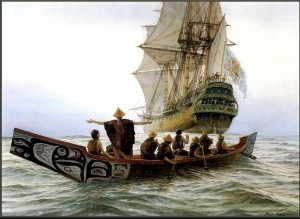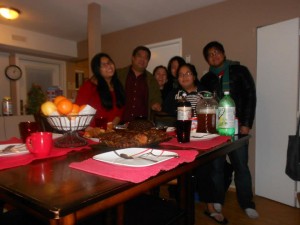Assignment 3:2 – Frye’s Way
A much more complicated cultural tension [more than two languages] arises from the impact of the sophisticated on the primitive, and vice a versa. The most dramatic example, and one I have given elsewhere, is that of Duncan Campbell Scott, working in the department of Indian Affairs in Ottawa. He writes of a starving squaw baiting a fish-hook with her own flesh, and he writes of the music of Dubussy and the poetry of Henry Vaughan. In English literature we have to go back to Anglo-Saxon times to encounter so incongruous a collision of cultures (Bush Garden 221).
It is interesting, and telling of literary criticism at the time, that while Frye lights on this duality in Scott’s work, or tension between “primitive and civilized” representations; however, the fact that Scott wrote poetry romanticizing the “vanishing Indians” and wrote policies aimed at the destruction of Indigenous culture and Indigenous people – as a distinct people, is never brought to light. In 1924, in his role as the most powerful bureaucrat in the department of Indian Affairs, Scott wrote:
The policy of the Dominion has always been to protect Indians, to guard their identity as a race and at the same time to apply methods, which will destroy that identity and lead eventually to their disappearance as a separate division of the population (In Chater, 23).
For this blog assignment, I would like you to explain why it is that Scott’s highly active role in the purposeful destruction of Indigenous people’s cultures is not relevant for Frye in his observations above? You will find your answers in Frye’s discussion on the problem of ‘historical bias’ (216) and in his theory of the forms of literature as closed systems (234 –5).
Frye calls out the structure of Canadian literature as a voice of the known, established fact and history, and never from the imaginative sprouted from experience, “the form of [the Canadian writer’s] expression of it can take shape only from what he has read, not from what he has experienced” (234). With this, he further expands on Canadian writers only expressing through their “school books” and write for the sake of the “argumentative of language” (235). From my understanding, Frye views Canadian literature as a report, a newspaper article giving a review on a movie that they had recently watched, even though Canadians have dreamed of writing the best selling novel, “the feeling that somebody some day will write a Canadian fictional classic” (236). But it hasn’t been done. And it is because Canadians write from history books, not from the imaginative thoughts drawn from experience.
Falling under the criteria of what makes up a Canadian writer is Scott’s writing. His work speaks to fight for the Indians from what has been said in text, what is factual and historically relevant for years. But the discussion of the cultural tension as Frye observed, was limited by Scott by only seeing black and white, civilized and barbarians. “Right was white, wrong black and, nothing else counted or existed” (228). So even with Scott’s protection for the Indians, his writing only focused on the black and white, limiting himself to left and right, purely historical facts that did not even try to reach outside of the historical bias and form any creative thought that, as Frye said, would have “positive effects on intellectual life.”
Frye tells us that the mentality of seeing things as just “two solitudes” is problematic, “nothing original can grow” (228). And that’s what makes Scott’s role in the culture of Indigenous culture and its destruction irrelevant to Frye. His entire belief and critic of Canadian literature is the tendency of such writers to box themselves in what is traditionally known through Canada’s history, and that lack of imaginative growth and creative expansion, as well as the inclination of Canadian writers to zoom in on just either left and right, white or black, the loss of colour in writing, is why we have never been able to achieve the Canadian classic literature dream.
Scott follows what Frye criticizes as using words as an “argumentative” form, writing with “more conviction and authority than literature itself” (229). His protection of the Indigenous peoples are used as weapons (229), rightfully so as it is a fight to guard their identity in a colonial country, but if his writing is read through a Frye microscope, it highly negates what literature should be formed of. Scott aimed to fight and argue and protect, when Frye has been a critic of such ways as it strays away from what he values in the structure of actual form of literature.
Work cited:
Frye, Northrop. The Bush Garden; Essays on the Canadian Imagination. 2011 Toronto: Anansi. Print.




